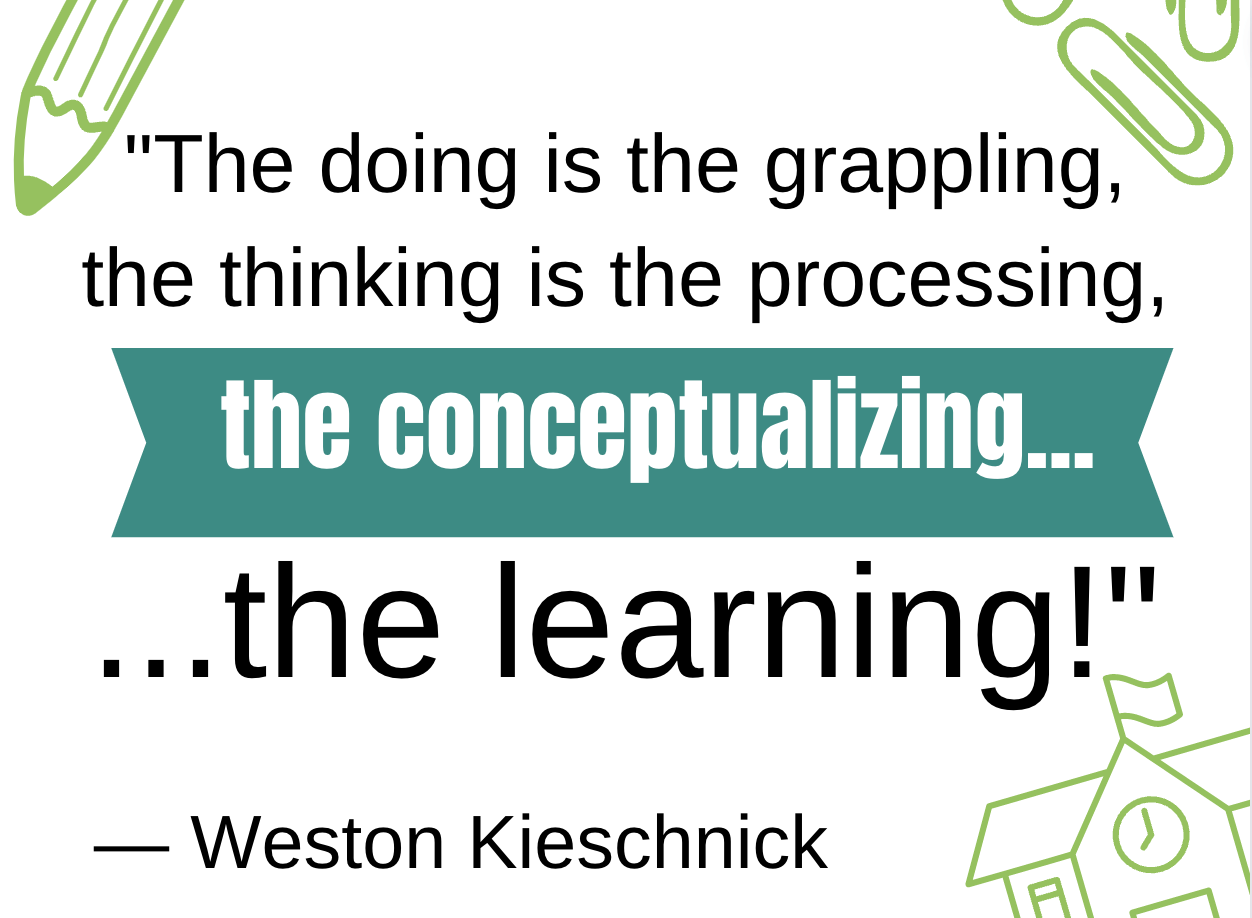
This blog post was originally published by the Grant Wood AEA Digital Learning team four years ago, but the content may be even more important following COVID.
There are times when life seems to point you in a specific direction. I've been hit on the head with this question this week: Who is doing the talking in our classrooms?
You may wonder why this question is important to a Digital Learning consultant. After all, isn't my focus on technology? Actually, my focus is on learning.
I work to support teachers as they continue to move toward a more learner-focused stance in their classroom. Now, back to the question. Who is doing the talking?
Whenever I think of this question, I picture the teacher at the beginning of Ferris Bueller's Day Off as he stands in front of the class, talking and talking, and asking and answering his own questions. I believe that caricature of classroom practice is perpetuated because that is the way many adults remember their education, a one-way street of information.
I started teaching in 1987. The philosophy that I learned and practiced was 'students as empty vessels'. Our job, as educators, was to fill that vessel. And that was a one-way process. Is that model still true? Are the students arriving in our classrooms today empty vessels? I would argue that no student has ever been an empty vessel.
If you have spent any time listening to three and four year olds, you know that their minds are filled with ideas and images and thoughts and all sorts of things. They are FAR from empty. If you stand in the hallway between classes at any school, you can see and hear that students' minds are filled to overflowing.
The more we learn about trauma and children the more we know that often their minds are so full of the rest of their lives that there is very little room for school learning. So, it would seem that the idea of an empty vessel for educated teachers to fill is a myth that we 'busted!' So what then?
Let's have students teach one another - suggests another common belief.
| As this graphic demonstrates there is research to support that when students teach one another they retain their learning better. This research on learning was done by the National Training Laboratories, Bethel Maine. The problem with this research is it has been debunked by The Washington Post, as well as other blogs and research papers. |
|
Another seasoned edu-practice bites the dust. Or does it?
Let's reconsider the "Teach Others" level from this graphic and circle back to my original question.
Who is doing the talking? In his book "Bold School", Weston Kieschnick says "The doing is the grappling, the thinking, the processing, the conceptualizing, - the learning" (Kieschnick, 118). He is referring to students creating and using graphic organizers, but I think the same goes for all learning. The one doing the work is the one doing the learning!
Let's think about that a bit.
When I want to learn something new I have to actually DO it. I have to actually pound the nails, or parallel park the car, or dice the onions. It isn't enough to simply read about it or watch a video. It is in the doing that the learning happens.
What about our classroom practices?
Students learn about government and quadratic equations and photosynthesis by hearing from the teacher or watching a video or reading. Sometimes there is an experiment, or an activity, or a paper to be written. Even in these activities, it could be argued, students are passively gaining information (the old empty vessel idea), rather than actively doing.
Could the answer be as easy as shifting the role of talking?
I visited with a group of high school students at Iowa BIG. These are students attending traditional high school classes for part of the day and attending Iowa Big for the rest. Iowa Big reimagines education through learner-centered tenets and in the words of the Iowa BIG website, "Students gain agency and time management skills by solving community problems with nonprofit, business, and government agencies."
As I sat with these students planning an upcoming event, I asked them how a teacher in a traditional bell-to bell, brick and mortar classroom can begin to move their practice to more student participation - more learning by doing. Their answers were so simple and so difficult!
- "See us as more than just a student, but as a future leader."
- "Learn with us," one student said. She described how she works with a current teacher and there is mutual respect and open dialogue that includes criticism and praise.
- "Allow us to find our passion for what we are doing through choices.”
- Another student described the traditional classroom as more focused on "memorization" than on actual learning.
| One explained that at Iowa BIG the projects never end. You don't get to the end of the chapter and move on - you keep working until the work is done. And finally one said simply, "Talk to us." |
And there we are back to my first question...Who is doing the talking?
Because I believe as this instructional coach does, "The person talking is the person learning."
How can you:
- Seek ways to allow students to 'grapple' with the content?
- Make sure your eyes are open and really seeing your students?
- Listen deeply?
- Allow your students to do the talking?
| “Bold School: Old School Wisdom + New School Technologies = Blended Learning That Works.” Bold School: Old School Wisdom + New School Technologies = Blended Learning That Works, by Weston Kieschnick, International Center for Leadership in Education, 2017, p. 118. |  |
